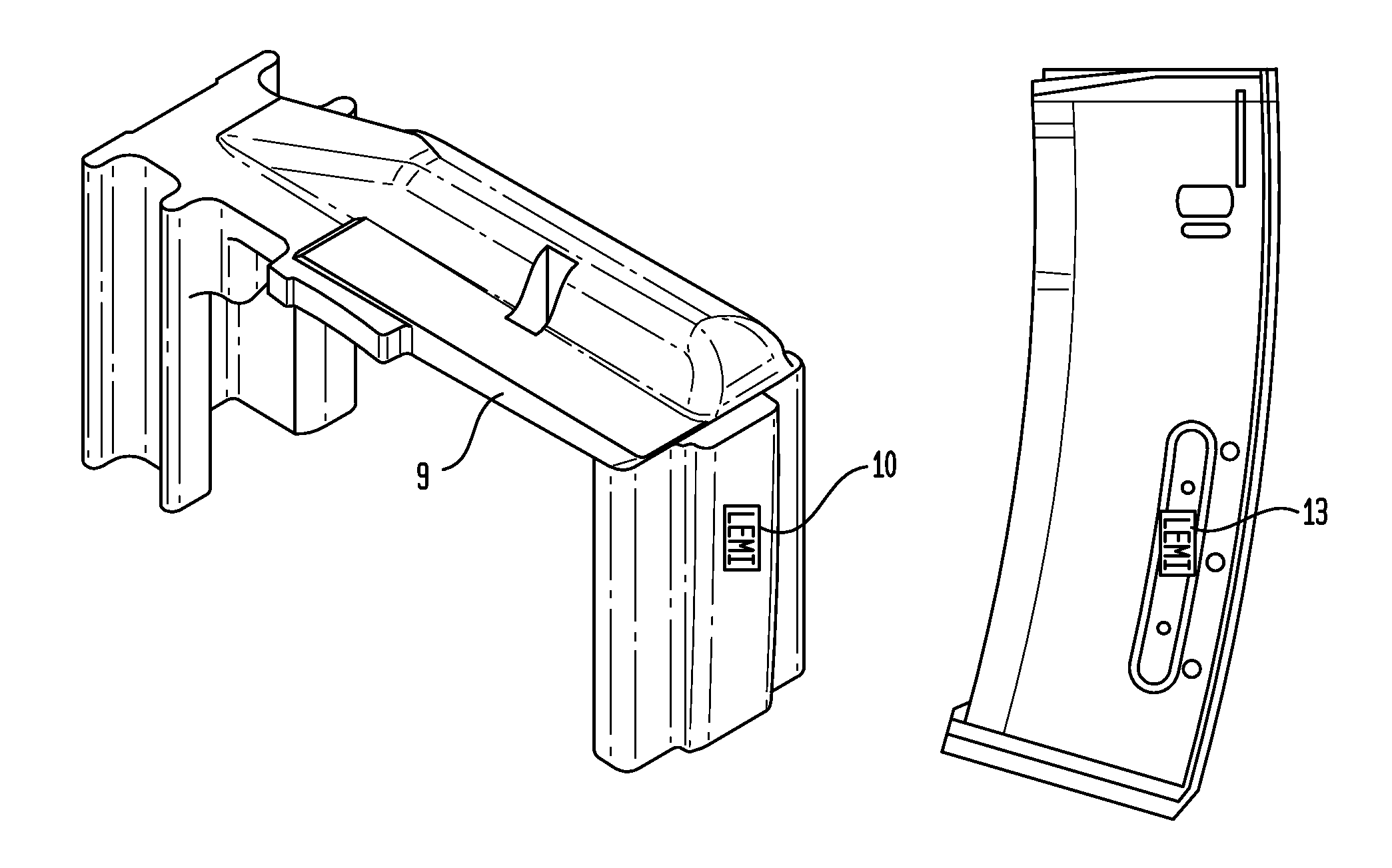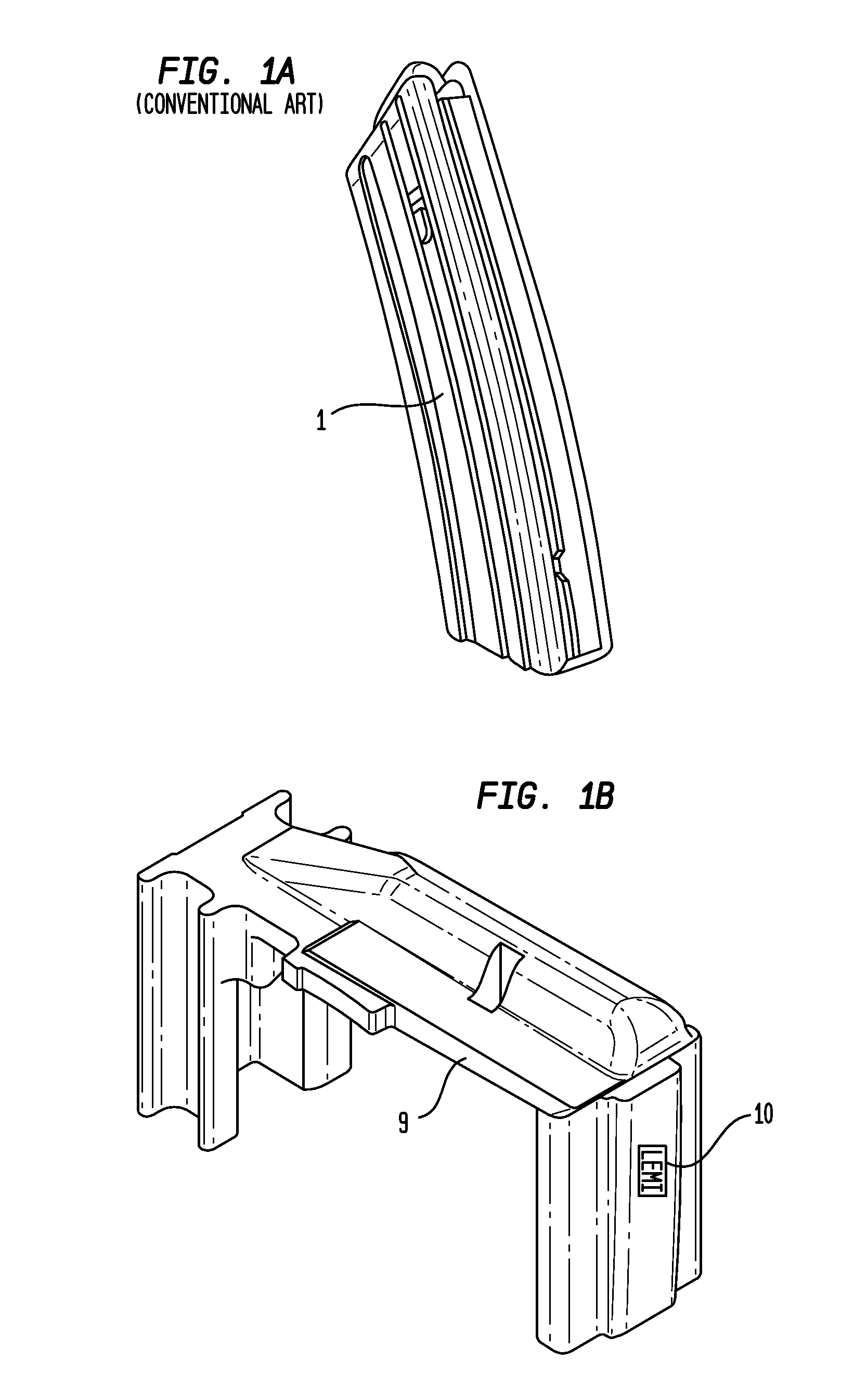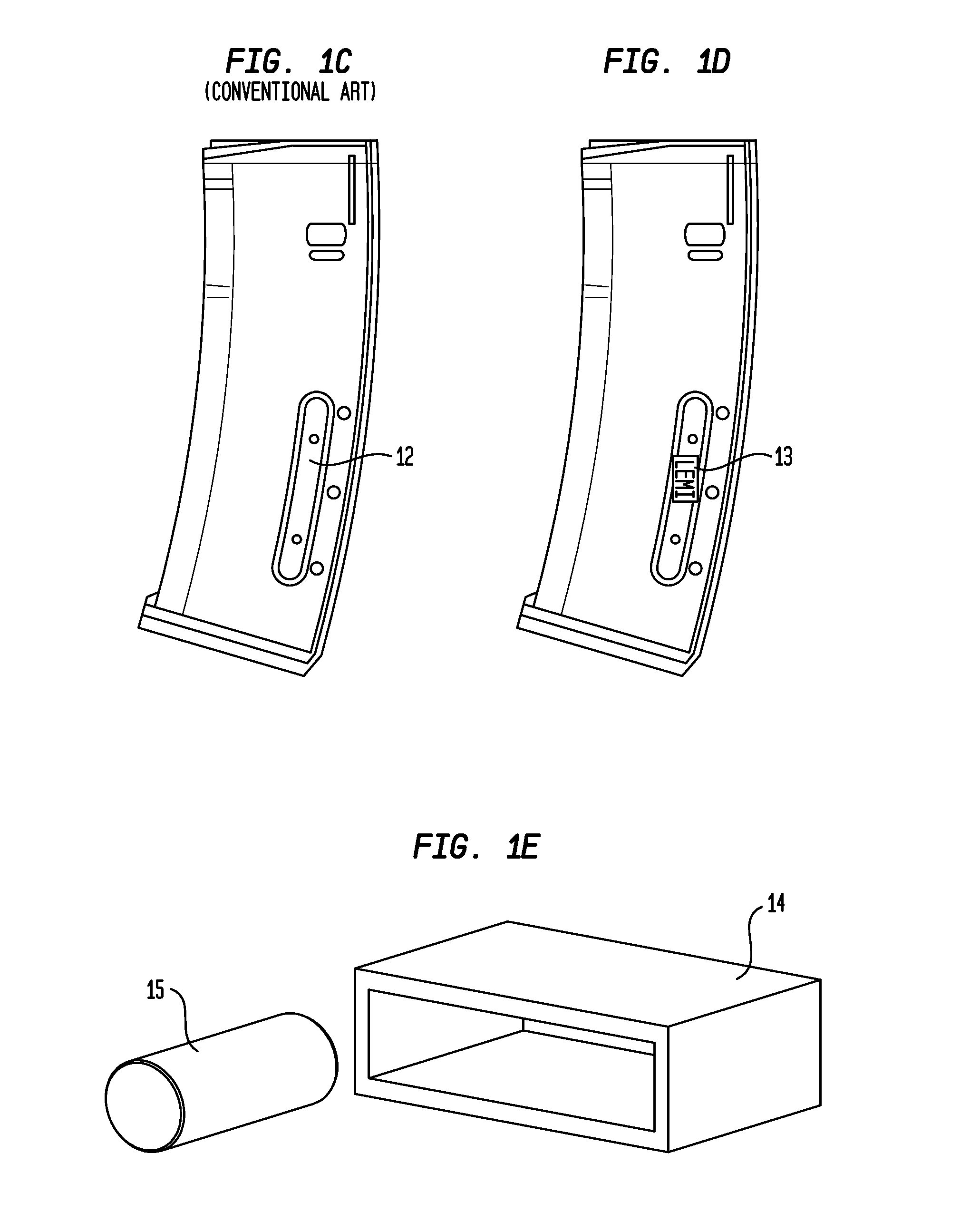Light emitting firearm magazine indicator
a technology of light-emitting firearms and indicators, which is applied in the direction of weapon components, ammunition loading, weapons, etc., can solve the problems of increasing the risk of not being able to identify the quantity of ammunition remaining in a conventional firearm magazine, increasing the risk, and increasing the risk of not being able to make instantaneous verification of the quantity of ammunition remaining in both day and night conditions,
- Summary
- Abstract
- Description
- Claims
- Application Information
AI Technical Summary
Benefits of technology
Problems solved by technology
Method used
Image
Examples
Embodiment Construction
[0035]The light-emitting firearm magazine indicator, (LEMI), (FIG. 1E), is designed to be, and can be applied universally to all makes and models of firearm magazine. This encompasses handguns, rifles, and shotguns. Although these categories of firearms fulfill very different roles as well as have different internal / external structures, they also share much of the same design as it pertains to the internal and external structure of the contemporary conventional firearm magazines they utilize. Examples of the aforementioned magazines most commonly shared structural similarities are displayed in the following drawings: FIG. 2A, FIG. 2A-2, FIG. 2A-4
[0036]Categories of firearms relevant to the LEMI invention include the following;[0037]Handgun—semi-automatic, single shot, full automatic(select-fire)[0038]Rifle—semi-automatic, bolt action single shot, full automatic(select-fire)[0039]Shotgun—pump action, semi-automatic and full automatic(select-fire)
[0040]Structural similarities of magaz...
PUM
 Login to View More
Login to View More Abstract
Description
Claims
Application Information
 Login to View More
Login to View More - R&D
- Intellectual Property
- Life Sciences
- Materials
- Tech Scout
- Unparalleled Data Quality
- Higher Quality Content
- 60% Fewer Hallucinations
Browse by: Latest US Patents, China's latest patents, Technical Efficacy Thesaurus, Application Domain, Technology Topic, Popular Technical Reports.
© 2025 PatSnap. All rights reserved.Legal|Privacy policy|Modern Slavery Act Transparency Statement|Sitemap|About US| Contact US: help@patsnap.com



